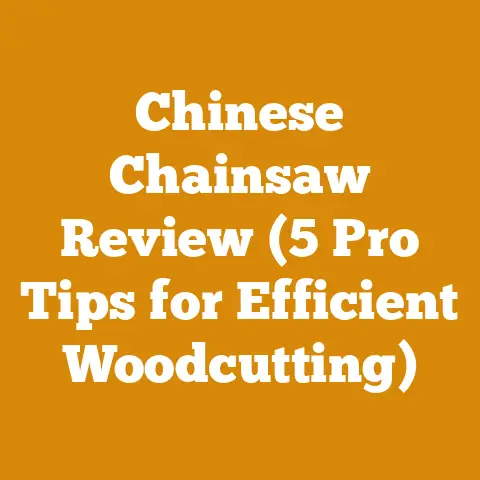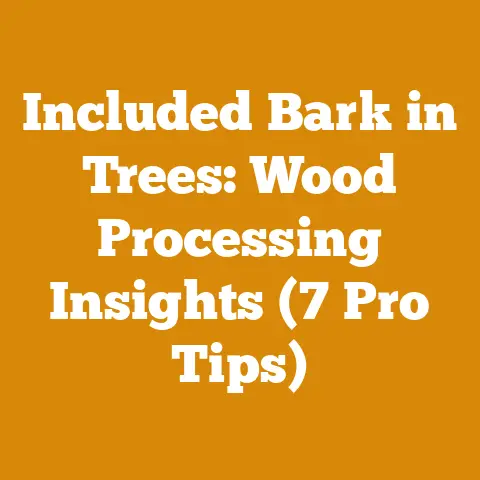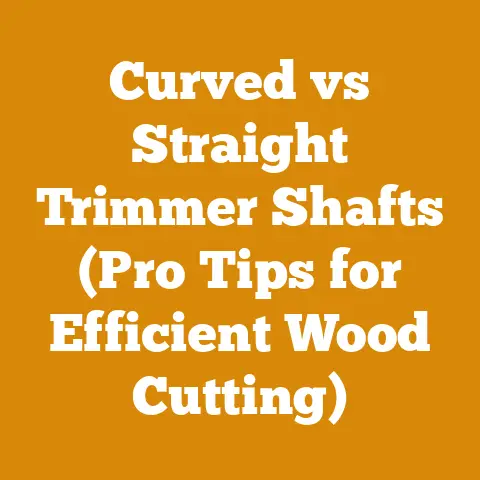How to Enclose Porch (5 Expert Tips for Woodworkers)
Enclosing a porch – it’s a thought that likely conjures up images of cozy evenings, bug-free relaxation, and extending your living space without a full-blown addition. But before you start dreaming of your new sunroom, let’s talk brass tacks: How much will this actually cost?
I’ve seen projects balloon in cost faster than you can say “board foot.” This isn’t just about slapping up some screens; it’s about creating a functional, weatherproof, and aesthetically pleasing space. So, let’s dive into the real costs involved in enclosing your porch, armed with data, practical advice, and a touch of woodworker’s wisdom.
Enclosing Your Porch: 5 Expert Tips for Woodworkers (and a Realistic Budget Breakdown)
Understanding the Scope: More Than Just Four Walls
Enclosing a porch is a project with many faces. Are we talking a simple screened-in porch to keep the mosquitoes at bay? Or a fully insulated, four-season room that requires heating and cooling? The answer to that question is the single biggest driver of cost. Before we even think about lumber prices, we need to define the scope.
First Impressions: What Kind of Enclosure Are We Talking About?
Think of it like this: you wouldn’t use a chainsaw to carve a toothpick, and you wouldn’t use a handsaw to fell a giant oak. Similarly, the type of enclosure you choose dictates the tools, materials, and labor required.
- Screened-In Porch: This is the most basic and affordable option. It provides bug protection and some shade but offers little in the way of insulation or weather protection.
- Three-Season Porch: This usually involves installing windows (often sliding or removable) and a door, offering protection from the elements during milder months. Insulation is minimal, if present at all.
- Four-Season Porch: This is essentially an addition to your house. It requires full insulation, windows, doors, and a heating/cooling system. It’s the most expensive option but provides year-round usability.
The Variable Landscape: Factors Affecting Your Porch Enclosure Costs
Think of your porch enclosure project as a tree – its growth, strength, and ultimately its value are shaped by its environment. Similarly, a multitude of factors will influence the final price tag of your project. Let’s examine the key variables:
- Porch Size: This is obvious, but the larger the porch, the more materials and labor you’ll need.
- Materials: This is a big one. Wood type, window quality, screen material, insulation type – all these choices drastically impact the cost.
- Labor: Are you DIYing it, or hiring a contractor? Labor costs can be significant, especially for complex projects.
- Location: Material prices and labor rates vary widely depending on your geographic location.
- Permits: Building permits are often required for porch enclosures, adding another layer of cost.
- Existing Porch Condition: A dilapidated porch might require structural repairs before you can even start the enclosure, adding to the overall expense.
- Design Complexity: A simple rectangular enclosure will be cheaper than a complex design with angles and custom features.
- Seasonality: Demand for contractors often spikes in the spring and summer, potentially driving up labor costs.
- Accessibility: If your porch is difficult to access, it could increase labor costs.
Tip #1: Demystifying Material Costs: Wood, Windows, and Beyond
Let’s break down the major material categories and explore their cost implications. I’ll share some insights based on my experience in sourcing lumber and other building materials.
Wood: The Backbone of Your Enclosure
The type of wood you choose will significantly impact the cost and aesthetics of your porch enclosure. Here’s a quick rundown:
- Pressure-Treated Lumber: This is the most common and affordable option for framing. It’s resistant to rot and insect damage, making it ideal for outdoor use. Expect to pay around $3-$6 per linear foot for standard sizes (2x4s, 2x6s).
- Cedar: A naturally rot-resistant and beautiful wood, cedar is a popular choice for siding and trim. However, it’s more expensive than pressure-treated lumber, typically costing $8-$15 per linear foot.
- Redwood: Similar to cedar in terms of rot resistance and appearance, redwood is another premium option. Expect to pay a premium price, ranging from $10-$20 per linear foot.
- Composite Lumber: Made from recycled plastic and wood fibers, composite lumber is a low-maintenance and durable option. It’s more expensive upfront but can save you money in the long run due to its longevity. Prices range from $5-$12 per linear foot.
- Exotic Hardwoods: Woods like Ipe and Mahogany are naturally resistant to the elements and can add a touch of elegance to your porch. Expect to pay $20+ per linear foot.
Data Point: According to the National Association of Home Builders (NAHB), lumber prices have fluctuated wildly in recent years due to supply chain disruptions. As of late 2023, lumber prices have stabilized somewhat but remain higher than pre-pandemic levels.
My Experience: I once built a small shed using reclaimed barn wood. While the material itself was practically free, the labor involved in cleaning, prepping, and milling the wood was significant. Sometimes, “free” materials can end up costing you more in time and effort.
Windows: Letting the Light (and Keeping the Weather Out)
Windows are a crucial element of any porch enclosure, affecting both aesthetics and functionality.
- Single-Pane Windows: These are the most affordable option but offer minimal insulation. They’re suitable for screened-in porches or three-season rooms in mild climates. Expect to pay $50-$150 per window.
- Double-Pane Windows: These offer better insulation than single-pane windows and are a good choice for three-season rooms or four-season rooms in moderate climates. Prices range from $150-$400 per window.
- Triple-Pane Windows: These provide the best insulation and are recommended for four-season rooms in cold climates. They’re the most expensive option, costing $300-$700+ per window.
- Window Types: Sliding windows, double-hung windows, casement windows, and fixed windows all have different price points. Sliding windows are generally the most affordable, while casement windows tend to be the most expensive.
Screening: Keeping the Bugs at Bay
If you’re opting for a screened-in porch, the type of screening you choose will affect the cost.
- Fiberglass Screening: This is the most affordable option, but it’s also the least durable. Expect to pay around $0.50-$1.00 per square foot.
- Aluminum Screening: More durable than fiberglass, aluminum screening is a good choice for high-traffic areas. Prices range from $1.00-$2.00 per square foot.
- Stainless Steel Screening: The most durable option, stainless steel screening is resistant to rust and corrosion. It’s also the most expensive, costing $3.00-$5.00 per square foot.
Insulation: Staying Warm (or Cool)
If you’re building a four-season room, insulation is essential.
- Fiberglass Batt Insulation: This is the most common and affordable type of insulation. Expect to pay around $0.50-$1.00 per square foot.
- Spray Foam Insulation: This provides excellent insulation and air sealing but is more expensive than fiberglass batt insulation. Prices range from $1.00-$3.00 per square foot.
- Rigid Foam Insulation: This is a good option for insulating floors and walls. It’s more expensive than fiberglass batt insulation but provides better insulation. Prices range from $1.50-$3.00 per square foot.
Other Materials:
Don’t forget to factor in the cost of other materials, such as:
- Doors: Exterior doors can range from $200-$1000+, depending on the material and style.
- Fasteners: Screws, nails, and other fasteners can add up quickly.
- Sealant: Caulk and sealant are essential for weatherproofing your enclosure.
- Paint/Stain: If you’re using wood, you’ll need to factor in the cost of paint or stain.
- Electrical Wiring: If you’re adding electrical outlets or lighting, you’ll need to hire an electrician.
Actionable Takeaway: Create a detailed materials list and get quotes from multiple suppliers to compare prices. Consider buying in bulk to save money.
Tip #2: Labor Costs: DIY vs. Hiring a Pro
The decision to DIY or hire a contractor is a major one, impacting both the cost and the timeline of your project. Let’s weigh the pros and cons.
DIY: The Sweat Equity Approach
If you’re a skilled woodworker with experience in construction, DIYing your porch enclosure can save you a significant amount of money. However, it’s not for the faint of heart.
Pros:
- Cost Savings: You’ll save on labor costs, which can be a significant portion of the overall budget.
- Control: You have complete control over the design and execution of the project.
- Satisfaction: There’s a certain satisfaction that comes from building something yourself.
Cons:
- Time Commitment: DIY projects can take a lot of time, especially if you’re working alone.
- Skill Requirements: You need to have the necessary skills to complete the project safely and correctly.
- Potential for Mistakes: Mistakes can be costly to fix.
- Permitting Issues: Dealing with building permits can be a hassle.
Hiring a Contractor: The Professional Touch
Hiring a contractor can be a good option if you lack the skills or time to DIY the project.
Pros:
- Expertise: Contractors have the experience and expertise to complete the project correctly and efficiently.
- Time Savings: Contractors can complete the project much faster than you could on your own.
- Permitting Assistance: Contractors can often handle the permitting process for you.
- Warranty: Contractors typically offer a warranty on their work.
Cons:
- Cost: Hiring a contractor can be expensive.
- Finding a Good Contractor: It can be challenging to find a reliable and qualified contractor.
- Communication Issues: Communication breakdowns can lead to misunderstandings and delays.
Understanding Labor Costs:
Labor costs vary widely depending on your location, the contractor’s experience, and the complexity of the project. Here are some general guidelines:
- General Contractor: A general contractor typically charges 10-20% of the total project cost.
- Hourly Rate: Some contractors charge an hourly rate, which can range from $50-$150 per hour.
- Per-Project Fee: Other contractors charge a per-project fee, which is a fixed price for the entire project.
Data Point: According to HomeAdvisor, the average cost to hire a contractor for a porch enclosure project ranges from $5,000 to $20,000.
My Experience: I once hired a contractor to install new windows in my house. I got quotes from three different contractors and chose the one with the best combination of price and experience. It’s important to do your research and get multiple quotes before hiring a contractor.
Actionable Takeaway: If you’re considering DIYing the project, honestly assess your skills and time commitment. If you’re hiring a contractor, get multiple quotes, check references, and read online reviews. Ensure you have a detailed contract that outlines the scope of work, payment schedule, and warranty.
Building permits are often required for porch enclosure projects, especially if you’re making structural changes or adding electrical or plumbing. Ignoring permit requirements can lead to fines, project delays, and even forced demolition.
Understanding Permit Requirements:
Permit requirements vary depending on your location. Contact your local building department to find out what permits are required for your project.
Typical Permit Costs:
Permit costs can range from $100 to $1,000 or more, depending on the scope of the project and your location.
The Permitting Process:
The permitting process can be time-consuming and frustrating. Be prepared to submit detailed plans and drawings of your project. You may also need to undergo inspections at various stages of the project.
Data Point: According to the National Association of Home Builders (NAHB), the average time to obtain a building permit is 30-60 days.
My Experience: I once started a small deck project without obtaining the necessary permits. A neighbor reported me to the building department, and I was forced to stop work and apply for a permit. The delay cost me time and money.
Actionable Takeaway: Don’t skip the permitting process. It’s better to be safe than sorry. Contact your local building department to find out what permits are required for your project and start the application process early.
Tip #4: Budgeting for the Unexpected: The Contingency Fund
Murphy’s Law applies to home improvement projects: “Anything that can go wrong, will go wrong.” That’s why it’s essential to create a contingency fund to cover unexpected costs.
Estimating Unexpected Expenses:
A good rule of thumb is to set aside 10-20% of your total budget for unexpected expenses.
Common Unexpected Costs:
- Hidden Damage: Rot, insect damage, or structural problems can be uncovered during the demolition process.
- Material Price Increases: Lumber and other building material prices can fluctuate.
- Change Orders: You may decide to make changes to the design or scope of the project after it has started.
- Weather Delays: Inclement weather can delay the project, adding to labor costs.
- Permitting Delays: Unexpected delays in the permitting process can also add to costs.
My Experience: I once renovated a bathroom in my house and discovered extensive water damage behind the walls. The repair work added several thousand dollars to the project cost.
Actionable Takeaway: Create a contingency fund and be prepared to adjust your budget if unexpected costs arise.
Tip #5: Cost Optimization Strategies: Saving Money Without Sacrificing Quality
Here are some practical tips for saving money on your porch enclosure project without sacrificing quality:
- Shop Around for Materials: Get quotes from multiple suppliers to compare prices.
- Buy in Bulk: Consider buying materials in bulk to save money.
- Use Reclaimed Materials: Reclaimed lumber, windows, and doors can be a cost-effective and environmentally friendly option.
- DIY What You Can: If you’re comfortable with DIY, tackle some of the less complex tasks yourself, such as painting or demolition.
- Simplify the Design: A simple rectangular enclosure will be cheaper than a complex design with angles and custom features.
- Consider Off-Season Construction: Demand for contractors is typically lower in the fall and winter, potentially leading to lower labor costs.
- Negotiate with Contractors: Don’t be afraid to negotiate with contractors on price.
- Prioritize Essential Features: Focus on the essential features of the enclosure and cut back on non-essential items.
- Phase the Project: Consider phasing the project over time to spread out the costs.
Data Point: According to Consumer Reports, homeowners who negotiate with contractors can save an average of 5-10% on project costs.
My Experience: I once built a fence using reclaimed lumber from a local demolition site. The lumber was practically free, and the fence looked great.
Actionable Takeaway: Be creative and resourceful when looking for ways to save money on your porch enclosure project. Every little bit helps.
A Realistic Budget Breakdown: From Screened-In to Four-Season
Let’s put it all together and create some realistic budget scenarios for different types of porch enclosures. These are just estimates, and your actual costs may vary depending on your location, materials, and labor choices.
Scenario 1: Screened-In Porch (10ft x 12ft)
- Materials:
- Pressure-treated lumber: $300
- Screening: $150
- Fasteners: $50
- Door: $200
- Total Materials: $700
- Labor (DIY): $0
- Permits: $100
- Contingency (10%): $80
- Total Estimated Cost: $880
Scenario 2: Three-Season Porch (10ft x 12ft)
- Materials:
- Pressure-treated lumber: $300
- Windows: $1,200
- Door: $400
- Fasteners: $50
- Sealant: $50
- Total Materials: $2,000
- Labor (Hired): $2,000
- Permits: $300
- Contingency (15%): $645
- Total Estimated Cost: $4,945
Scenario 3: Four-Season Porch (10ft x 12ft)
- Materials:
- Pressure-treated lumber: $300
- Windows (Triple-Pane): $3,000
- Door: $600
- Insulation: $600
- Electrical Wiring: $300
- HVAC System: $2,000
- Fasteners: $50
- Sealant: $50
- Total Materials: $6,900
- Labor (Hired): $6,000
- Permits: $500
- Contingency (20%): $2,680
- Total Estimated Cost: $16,080
Important Considerations:
- These are just estimates, and your actual costs may vary.
- Labor costs can vary widely depending on your location and the contractor’s experience.
- Permit costs can vary depending on your location and the scope of the project.
- Don’t forget to factor in the cost of furniture and other accessories.
Final Thoughts: From Dreams to Reality
Enclosing your porch can be a rewarding project that adds value and enjoyment to your home. By understanding the costs involved and planning carefully, you can create a beautiful and functional space that you’ll love for years to come.
Remember, the key is to define the scope of your project, create a detailed budget, and be prepared for the unexpected. Whether you’re a seasoned woodworker or a DIY novice, with the right planning and execution, you can turn your porch enclosure dreams into reality.
Now, get out there and start building! And remember, measure twice, cut once – a lesson I’ve learned the hard way more times than I care to admit!






